More than a few of us have spent time looking for the placard with a vehicle’s tire pressure recommendations. And more than a few consumers have looked at their owner’s manual or that elusive placard and wondered why the pressures there are different from the maximum pressure on the tire’s sidewalls.
How do the automobile manufacturers and their tire suppliers come up with those numbers?
It starts with the load the vehicle is designed to carry and the size of the tires installed on it. Worldwide, several organizations exist with the primary purpose of establishing and publishing interchangeability standards for tires, wheels, valves and allied parts.
In the U.S., this standardizing body is the Tire and Rim Association (TRA). Its European equivalent is the European Tire and Rim Technical Organization (ETRTO). The Japanese Automotive Tire Manufacturers Association (JATMA) has that respon-sibility in Japan. There are other similar organizations, but those three are the major players.
None of the major standardizing organizations is government mandated or regulatory. The organizations, and the standards that they set, are all voluntary. There is no legal obligation for any tire or auto manufacturer to abide by the standards. However, for practical and legal liability purposes, it simply makes sense to follow the standards and all vehicle and tire manufacturers use them.
While TRA, ERTO and JATMA all use slightly different protocols, they consult with each other and their standards are all very close. These organizations establish a range of standard dimensions for each tire size so that the proportions of all tires of a particular size are very similar. This assures that all tires of a specific size are interchangeable, at least in terms of their physical dimensions.
They also set each tire’s “load curve,” which is the relationship between inflation pressure and the tire’s maximum load carrying capacity. Like the size standards, there are some slight variations among the different organizations’ load curves, but they are not significant.
Part of each load curve standard is the point at which the load curve stops going up. For TRA p-metric standard load tires, it is at 35 psi. Equivalent ETRTO and JATMA tires peak at 36 psi. Interestingly, all of the standardizing organizations agree that standard load passenger car tires can (and should) use optional higher inflation pressures (44 psi or 51 psi) for certain circumstances such as high speed driving. However, these higher inflation pressures generally provide no increase in load carrying capacity and in some circumstances specify a reduction in load for high-speed use.
So the auto manufacturer knows what a vehicle weighs and knows how much weight can be added in fuel, passengers, cargo, etc. They can look at the load curve of the particular size that they have selected. To this number, auto manufacturers usually add a safety factor of around 10%.
For passenger cars, SUVs and light trucks, the load curve number launches a series of negotiations.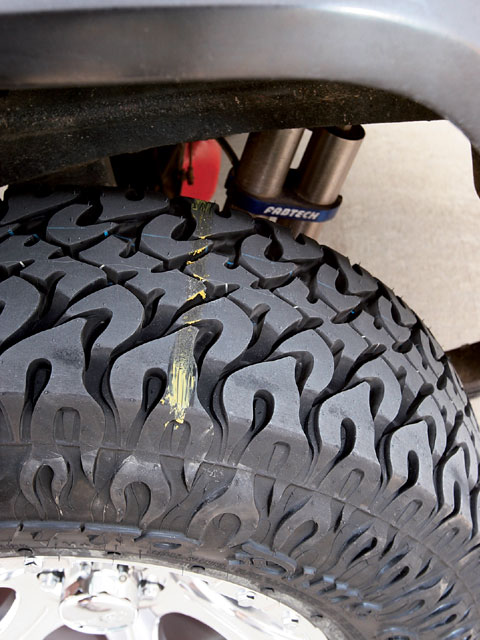 The engineers responsible for the vehicle’s handling are likely to lobby for additional inflation pressure to improve handling. Similarly, lower rolling resistance results in better fuel economy and leads to demands for higher inflations. Cars likely to see high-speed bring with them engineers insisting on more air pressure. On the other hand, ride considerations are an important consideration and that calls for lower inflation pressures.
The engineers responsible for the vehicle’s handling are likely to lobby for additional inflation pressure to improve handling. Similarly, lower rolling resistance results in better fuel economy and leads to demands for higher inflations. Cars likely to see high-speed bring with them engineers insisting on more air pressure. On the other hand, ride considerations are an important consideration and that calls for lower inflation pressures.
Today, the results of these nego-tiations are inflation pressures typically in the 32 psi to 35 psi range. If the champions of improved ride had their way, the 26 psi to 28 psi range that was common a few years ago would be more common. The safety factor of the higher inflation pressure seems to be carrying the day with automakers. After all, no one wants a repeat of the fiasco of when Ford set the recommended pressures on first generation Explorers at 26 psi.
In that situation, recommended inflation pressures too low to provide an adequate safety factor were frequently combined with poor maintenance, overloading and high ambient temperatures to produce a series of often-deadly accidents (250 deaths and 3,000 serious injuries were attributed to the problem).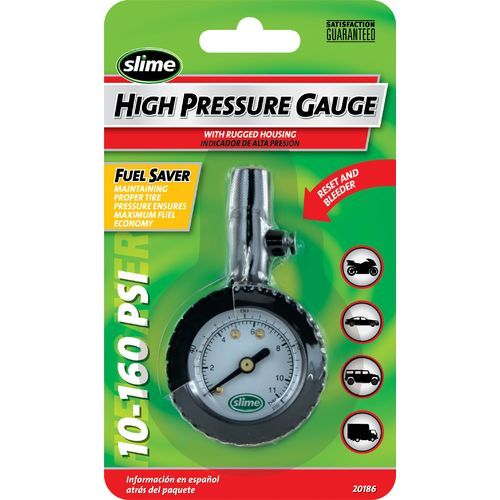
Other factors keep the process of determining recommended pressures from being completely cut and dried.
Aesthetics is often a big factor when automakers choose tire sizes, and the emphasis on style versus substance can complicate the negotiations. The popularity of extreme low-profile tires has required significant increases in recommended pressures. Cars likely to see significant high-speed often force auto manufacturers to lower load limits, move to higher tire speed ratings such as W or Y, or go to recommendations of up to 51 psi.
Although the process starts with load and seems like it would be simple, nothing is etched in stone.
The recommended pressures go onto the vehicle’s tire information placard once the engineers make their final decisions. Beginning in 2003, federal regulations required automobile manufacturers to place tire information placards in a standardized location and follow a common format. The tire information placards identify the OE tire sizes and inflation pressures (including the spare), along with the vehicle weight capacity.
All new vehicles must now have a placard located on the driver’s side doorjamb (the B-pillar). If a vehicle does not have a B-pillar, then the placard is to be placed on the rear edge of the driver’s door. And if the vehicle does not have a B-pillar and the driver’s door edge is too narrow, the placard is to be affixed on an inward facing surface next to the driver’s seating position.
In addition to providing the OE tire size(s) and recommended inflation pressure(s), vehicle manufacturers must also identify vehicle load capacity with the following sentence: “The combined weight of occupants and cargo should never exceed XXXX pounds.”
For vehicles produced between 1968 and 2003, the original tires size(s) and inflation pressures were listed on a placard usually found on the driver-side door or doorjamb, rear passenger doorjamb, fuel filler door, glove box or center console door or inside the engine compartment.
Sometimes alternate pressures based on load or speed conditions are also provided.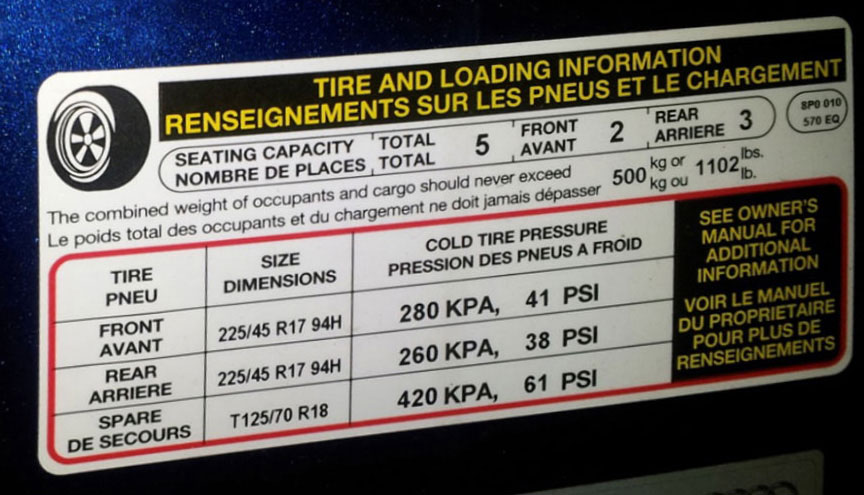
Consumers are often confused because federal safety regulations also require tire sidewalls to contain information about a tire’s maximum load capacity and maximum inflation pressure. For P-metric standard load tires, the maximum pressure listed on the sidewall will be 44 psi or 51 psi, even though the pressure where the maximum load occurs is 35 psi or 36 psi. On the sidewall, this would look like “Maximum Load XXXX lbs. Maximum Pressure YY psi.”
A few manufacturers interpret the regulation to mean the maximum load and the corresponding inflation pressure (“Maximum Load XXXX lbs. at YY psi”). Either way, too often consumers see the maximum inflation pressure on the sidewall and believe that is the correct pressure for their car.
Look at some of the online forums and you will see that the arguments about relying on the placard or the tire sidewall can be animated.
Regardless of the information on the tire sidewall, assuming the right size tire is installed on the vehicle the placard is the correct information.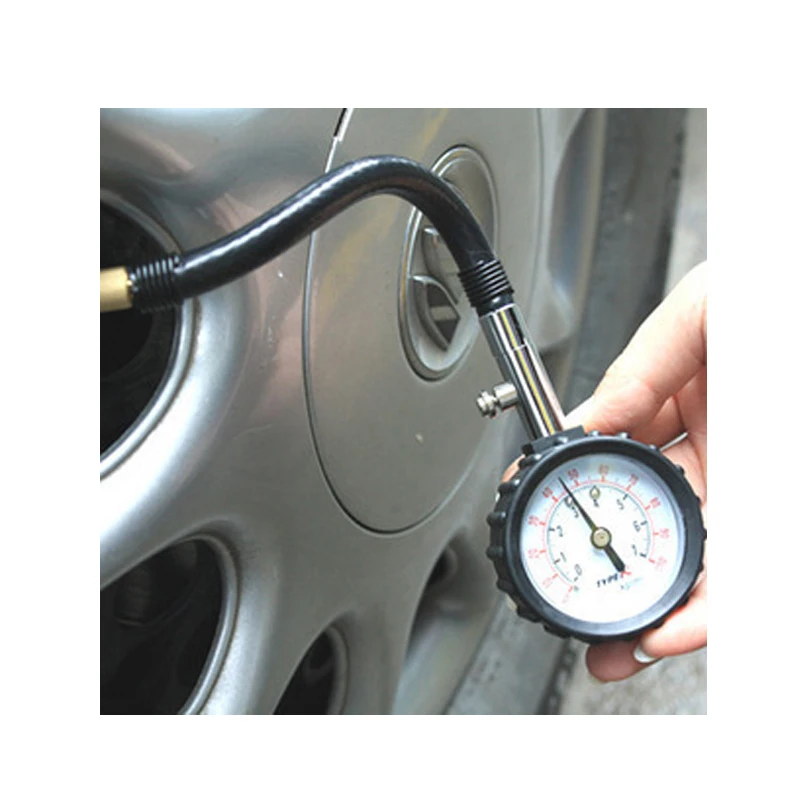
While the maximum load of the vehicle is the primary factor in establishing the recommended pressures, many other considerations went into the calculations. Don’t make changes lightly. Varying from the vehicle manufacturer’s recommendations requires careful consideration of why you want to make the change and the possible safety implications.
In this article:tire technology
From a safety and cost standpoint, tire maintenance is one of the most important things you can do for your car. The easiest way to care for your tires is both quick and inexpensive: maintain the correct tire pressure.
The recommended pressure for tires varies by the type of car and tire. Because maintaining your tires is so crucial to your safety and your car’s overall performance, it’s important to know what tire pressure is correct for your vehicle.
To learn what your tire pressure should be, look for your manufacturer’s recommendation, which is printed on a label inside your car.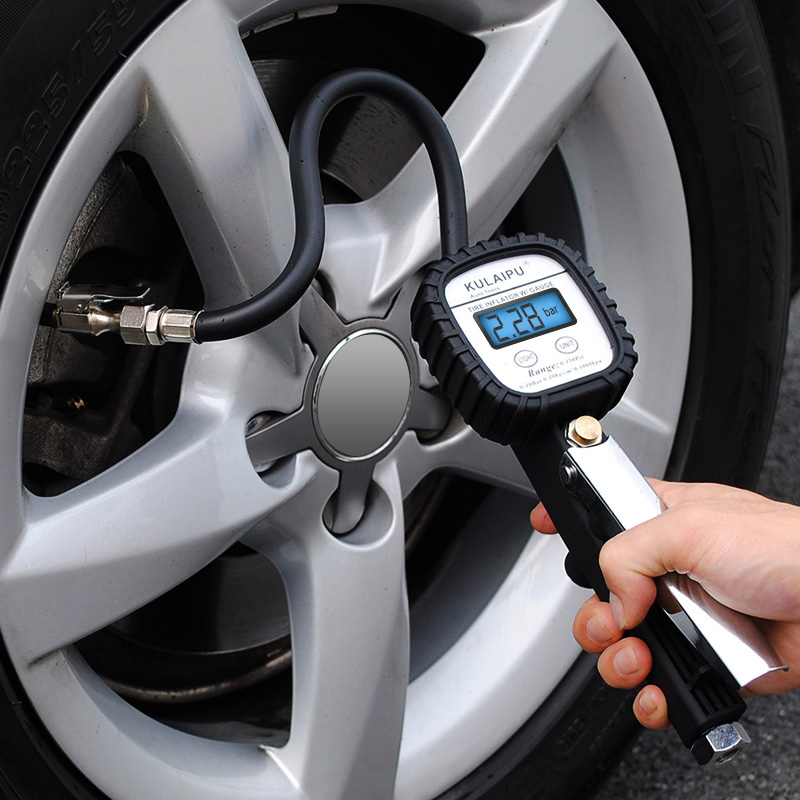 Depending on the vehicle, this label may be on the edge of the vehicle’s door, on the doorpost or in the glove box. The label will usually give recommendations for the front and rear tires as well as the spare, and it’s important that you stick to those guidelines. Even after you’ve replaced your tires, the same pressure guidelines on your car’s label apply to new tires of the same size.
Depending on the vehicle, this label may be on the edge of the vehicle’s door, on the doorpost or in the glove box. The label will usually give recommendations for the front and rear tires as well as the spare, and it’s important that you stick to those guidelines. Even after you’ve replaced your tires, the same pressure guidelines on your car’s label apply to new tires of the same size.
Pressure recommendations are based on readings taken from a tire pressure gauge. Check the pressure first thing in the morning or wait at least three hours after driving; this provides sufficient time for them to cool back down.1
Driving on underinflated tires is one of the biggest causes of tire failure, according to the National Highway Traffic Safety Administration. And not having enough air in your tires can lead to other problems. Under-inflated tires wear out more rapidly, handle poorly and reduce fuel efficiency.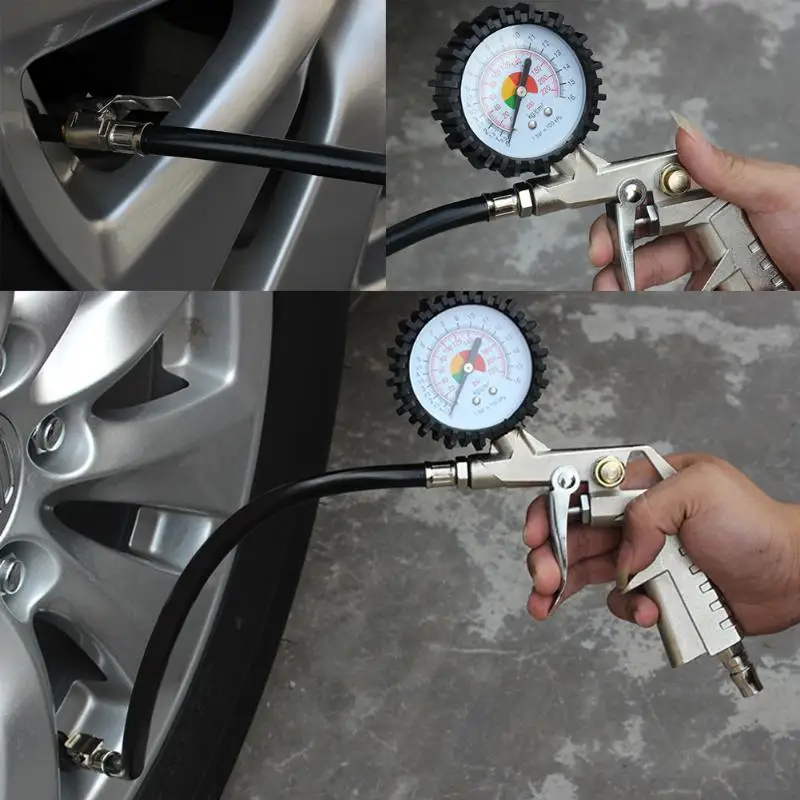 On the other hand, overinflated tires are more susceptible to damage from road irregularities, and they also result in a bumpier ride. Overfilling your tires is just as dangerous as underfilling them, so it’s important you know what is recommended for your vehicle.
On the other hand, overinflated tires are more susceptible to damage from road irregularities, and they also result in a bumpier ride. Overfilling your tires is just as dangerous as underfilling them, so it’s important you know what is recommended for your vehicle.
Knowing how to check tire pressure is critical to your safety and to keeping your tires in good working order.
When it comes to choosing a gauge, you typically have 3 options:
Put the pressure gauge into the valve stem, making sure the gauge is evenly and firmly pressed onto the stem.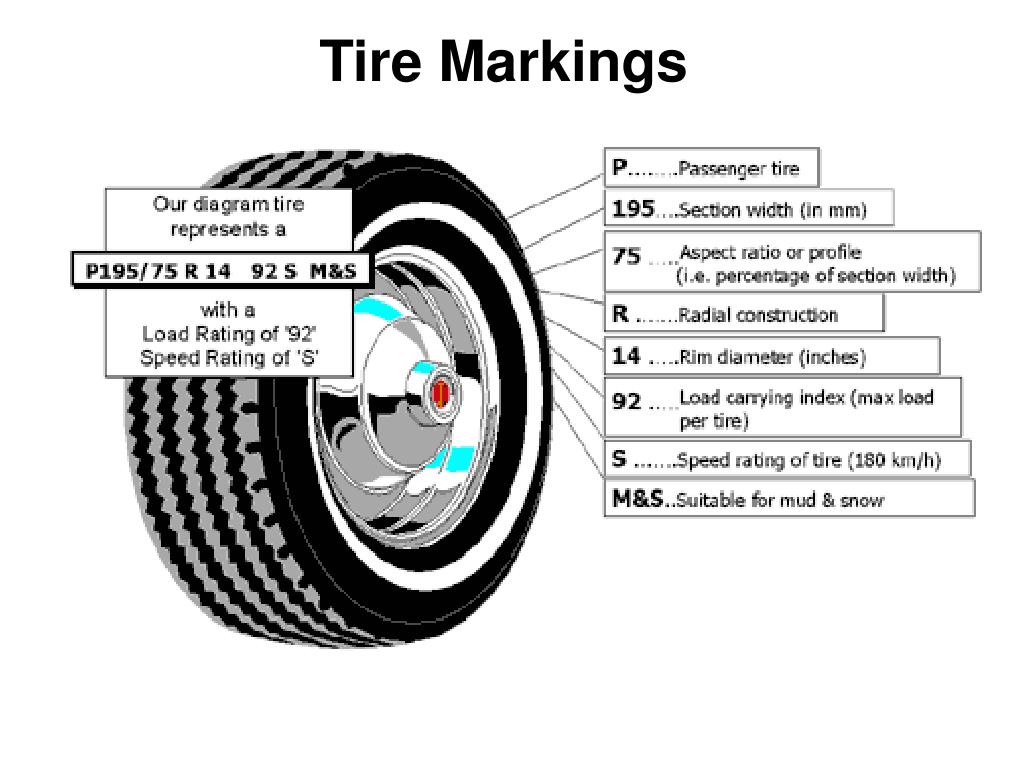 If you’re using a pen-style gauge, read the number on the rod that pops out of the sleeve. Read dial pressure gauges as you would a watch with one hand. With a digital pressure gauge, simply read the number on the screen. 2
If you’re using a pen-style gauge, read the number on the rod that pops out of the sleeve. Read dial pressure gauges as you would a watch with one hand. With a digital pressure gauge, simply read the number on the screen. 2
Find your tires’ recommended PSI in the owner’s manual or on a sticker just inside the driver’s side door. The proper PSI is crucial to your safety and the car’s longevity. Underinflated tires can overheat and wear unevenly; overinflated tires can blow out.1
Temperature has a direct effect on your air tires’ air pressure, so for an accurate PSI reading, make sure to check tire pressure when tires are cold. If it’s cold outside, then you can assume your tires are losing PSI and you should check even more frequently. This will help to ensure maximum safety. Take your car to a mechanic you trust for a professional assessment.3
If you happen to find yourself without a tire gauge and your car doesn’t have an indicator for low tire pressure, there are several things you can do to figure out whether your tires need to be inflated.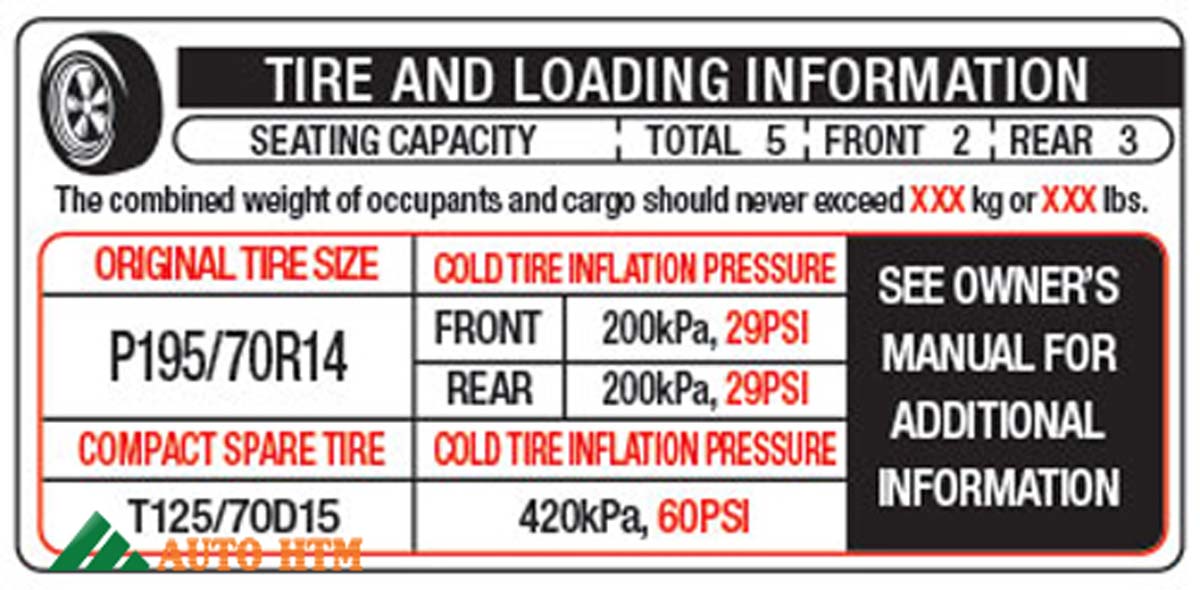
Of course, knowing your recommended PSI isn’t enough. You have to ensure you’re checking your tires regularly. Experts recommend you check air pressure once a month.5 Your car’s tire pressure monitoring system TPMS measures the amount of air in your tires to let you know whether your tires are properly inflated. 1
1
Frequently checking your PSI becomes even more important in the fall and winter, when outside temperatures drop and weather conditions fluctuate causing your tires to lose air more quickly. Generally, your tire will gain or lose 1 PSI for every 10-degree change in temperature, which means if you have a sudden drop of 30 degrees, you could lose 3 PSI overnight. If your tires were already low, this could cause tire damage, steering problems or even a flat tire.3
Knowing and maintaining the right air pressure is important to the safety and longevity of your tires. All it takes is a tire pressure gauge and a few minutes of your time.
Once you have the right tire pressure, make sure you also have the right coverage. Learn more about how Nationwide auto insurance can help protect you and save you money.
Sources:
1 https://www.pirelli.com/tires/en-us/car/driving-and-tire-tips/how-to-read/recommended-tire-pressure, Accessed April 2022.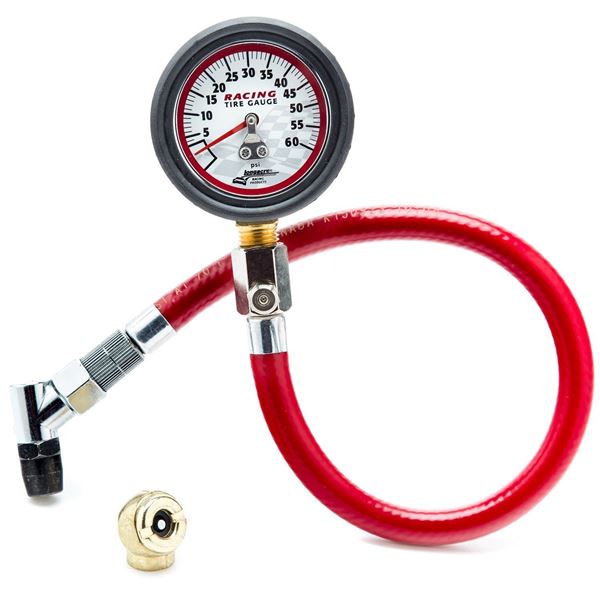
2 https://www.consumerreports.org/cro/tire-pressure-gauges/buying-guide/index.htm#:~:text=There%20are%20three%20types%20of,of%205%20to%2099%20psi., Accessed April 2022.
3 https://www.firestonecompleteautocare.com/blog/tires/should-i-inflate-tires-cold-weather/, Accessed April 2022.
4 https://rxmechanic.com/how-to-check-tire-pressure-without-gauge/, Accessed February 2022.
What should be the pressure in the tires of the car? Does it need to be adjusted and what will happen if the pressure is changed in one direction or another?
Two friends conversation:
- Hello, I lowered the wheel!
— Absolutely?
- No, only from below ...
Humor from the Web
Let's start with platitudes. The pressure must be as specified by the vehicle manufacturer. And since the average modern driver usually does not have such information, especially for him, a "cheat sheet" with the necessary numbers is hung on the middle pillar on the driver's side or on the gas tank hatch cover.
The pressure must be as specified by the vehicle manufacturer. And since the average modern driver usually does not have such information, especially for him, a "cheat sheet" with the necessary numbers is hung on the middle pillar on the driver's side or on the gas tank hatch cover.
A relatively rare solution: the "reminder" is located on the gas tank cap.
A relatively rare solution: the "reminder" is located on the gas tank cap.
An important point: pressure should be measured only on cold tires. By the way, especially for pedants: cold tires are those on which the car has been without movement for at least 5 hours.
This "cheat sheet" nestled on the driver's door. An example of how tire pressure recommendations change depending on tire size.
This "cheat sheet" nestled on the driver's door. An example of how tire pressure recommendations change depending on tire size.
An example of how tire pressure recommendations change depending on tire size.
Since car manufacturers allow the use of tires of different sizes, the pressure may also be different. In addition, the pressure in the front and rear tires has the right to both differ and be the same.
And here there is no difference in recommendations: what is in front, what is behind is the same.
And here there is no difference in recommendations: what is in front, what is behind is the same.
Related materials
Seasonal tire change: everything car owners need to know
Reduced pressure leads to an increase in tire deformation, more heating during wheel rolling, accelerated wear of the outer tread tracks. Perhaps even a violation of the integrity of the frame. As a result, fuel consumption increases.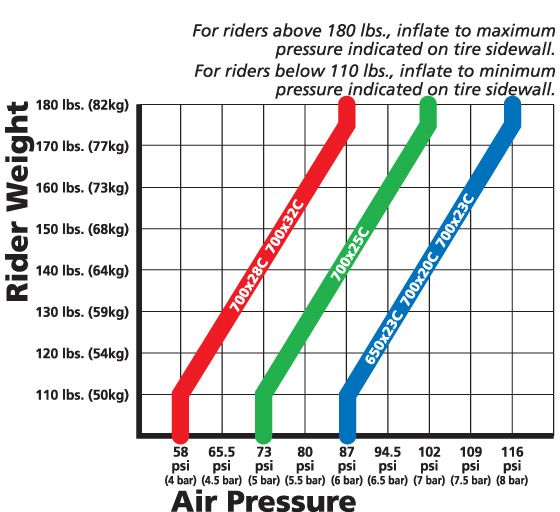 If you hit a hole in the road, the likelihood of damage to both the disk and the tire is higher.
If you hit a hole in the road, the likelihood of damage to both the disk and the tire is higher.
Increased pressure is an overstrain of the cords, increased wear of the middle part of the tread. In addition, when driving on a bad road, the shocks that are transmitted to the suspension and body will become more noticeable for riders. When hit in a pit, the likelihood of a tire burst increases.
Uneven pressure on all four wheels is the worst thing! At the same time, the car, while driving, inevitably leads the wheels with lower pressure to the side - in fact, sideways movement begins.
Tube tires of the past required a weekly check, especially before the advent of butyl tubes. Then the pressure began to be checked less often, and nowadays, as a rule, they are limited to visual inspection.
Tube tires of the past required a weekly inspection, especially before the advent of butyl rubber tubes.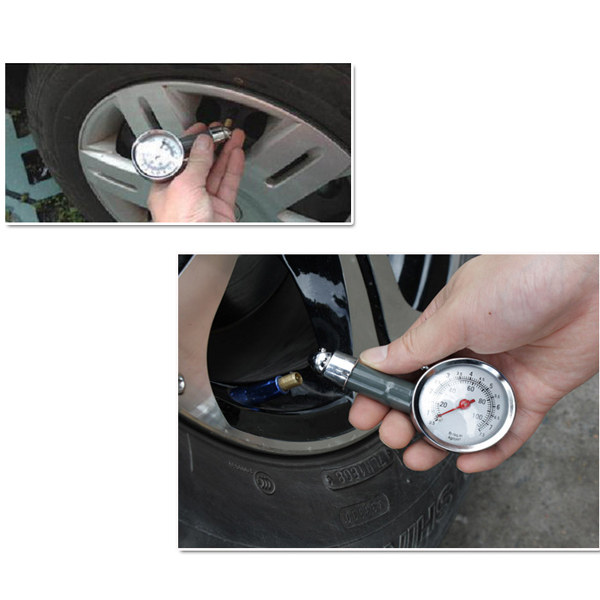 Then the pressure began to be checked less often, and nowadays, as a rule, they are limited to visual inspection.
Then the pressure began to be checked less often, and nowadays, as a rule, they are limited to visual inspection.
In a good way, you need to check the tire pressure at least once a month. And before a long journey - just a must.
Related materials
Budget Tire Compressor Test: Wrong Bees
The air pressure in an enclosed space changes by approximately 0.1 bar for every 10 degrees of temperature change. This allows, having installed summer wheels in April, not to worry about the pressure in them until the end of August, when the air temperature begins to drop. Having pumped up the wheels at the end of summer, you can already reach the seasonal shift. But having installed winter tires in October, with the first frosts, you should check the pressure a couple more times: when the temperature drops to minus ten, fifteen, and when it goes over minus twenty. But from the middle of winter until the moment of changing the wheels to summer ones, there is again a period of relaxation.
Electronics are increasingly thinking for us. Now, a tire pressure monitoring system is being installed on parts of production cars. Moreover, some simply read the wheel speeds through the ABS sensors: after all, a flat tire rotates faster, since its radius is smaller than that of inflated wheels. There are also sensors that evaluate the amount of air pressure and send information via radio to the "brains" of the car. Such devices can also be purchased separately: sensors - in the wheels, and the receiver - in the car.
By the way, a lot depends on the road you are going to take.
The operating instructions supplied with the vehicles indicate that it is recommended to increase the pressure by 0.2-0.3 bar before driving for a long time on expressways. We advise you to follow these recommendations on all cars: it will not get worse.
The operating instructions supplied with the vehicles state that it is recommended to increase the pressure by 0. 2-0.3 bar before driving for a long time on highways. We advise you to follow these recommendations on all cars: it will not get worse.
2-0.3 bar before driving for a long time on highways. We advise you to follow these recommendations on all cars: it will not get worse.
I don’t want to discuss overload: this, you see, is not the case. But, unfortunately, many deliberately overload the car several times a year, not only stuffing the interior and trunk to the eyeballs, but also attaching a trailer, which additionally loads the rear wheels of the tractor. In such cases, we advise you to increase the pressure in the rear tires by at least 0.2–0.3 bar. Tires will only thank you.
If you doubt the accuracy of your pressure gauge, then we advise you to check it immediately after leaving the tire shop, where you were set the obviously necessary pressure, to measure it with your own measuring device (separate or as part of the compressor). So you determine whether your pressure gauge is "lying" a lot. For the future, right on the dial, you can put a mark of the correct value.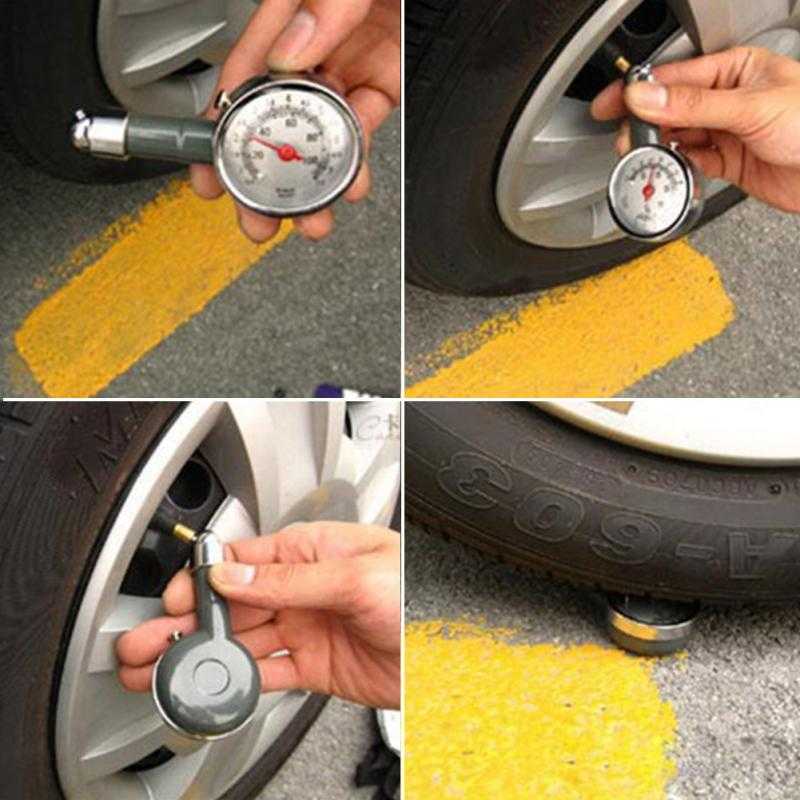
Of course, it is better to have your own, known to be correct pressure gauge, but such a toy is not cheap.
Of course, it is better to have your own, known to be correct pressure gauge, but such a toy is not cheap.
If terrible ice caught you on summer tires, say, in the country, and you need to drive some distance along an absolutely icy road by any means, then you should reduce the tire pressure to approximately 1.6 bar. Is it bad for tires? Yes. But an accident will cost more. In addition, in such a situation, one does not have to wait for high speed, and overheating of tires at near-zero temperatures most likely will not happen.
Everyone knows what caused the excellent maneuverability of Soviet tanks? That's right: wide tracks, that is, low pressure on the ground. We, having an ordinary, non-all-wheel drive car, are also able to provide it with a similar cross-country ability. If the wheels of the car sink into sand, snow or sticky mud, then it makes sense to lower the tire pressure. And not only driving, but also driven wheels.
If the wheels of the car sink into sand, snow or sticky mud, then it makes sense to lower the tire pressure. And not only driving, but also driven wheels.
We know from experience that you can often get out of the "black spot" by reducing the pressure to 1.2 bar.
We know from experience that it is often possible to get out of the "black hole" by reducing the pressure to 1.2 bar.
In a very critical situation, if you know that you have a fairly narrow disc and a relatively wide tire (such a wheel has a lower chance of self-disassembly), you can reduce the pressure to 1.0 bar.
Stalled on wet grass? Try to relieve pressure.
Stalled on wet grass? Try to relieve pressure.
Pressure reduction is also useful in other cases - for example, to overcome diagonal hanging. If you reduce the pressure in the wheels on which the car rests, their height will decrease and there will be a chance to “hook” on the suspended wheels. Of course, if the car has already laid down on the bottom, then it is too late to reduce the pressure - this will only interfere.
Of course, if the car has already laid down on the bottom, then it is too late to reduce the pressure - this will only interfere.
A concrete example of the effect of pressure on flotation. In this case, the pressure is very low, and the contact patch of the wheel with the coating is much larger than that of a conventional car.
A concrete example of the effect of pressure on patency. In this case, the pressure is very low, and the contact patch of the wheel with the coating is much larger than that of a conventional car.
In general, the pressure in tires, as well as in vessels, is better to keep normal. Any deviation has its negative consequences. Tell us, have you ever had to adjust tire pressure to improve flotation?
Tire pressure: your norm
Tire pressure: your norm
If you study the requirements for a car wheel, you can distinguish only two groups: those that you have to pay attention to only once (when buying) and those that need to be monitored constantly.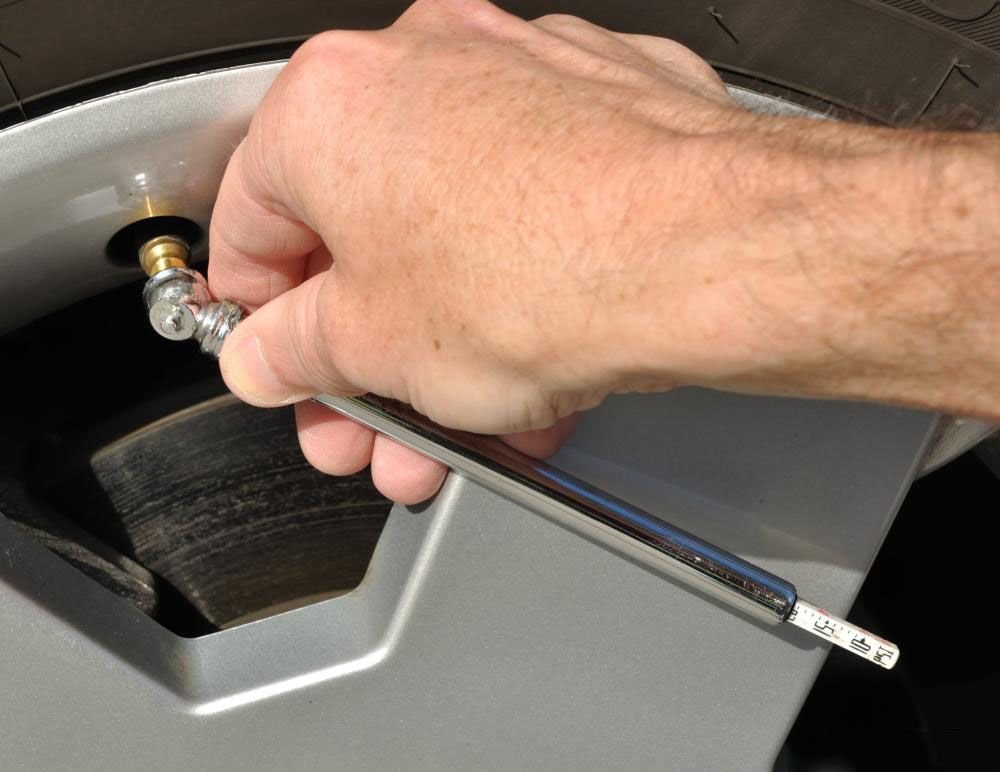 Among the latter, there is such a criterion as tire pressure.
Among the latter, there is such a criterion as tire pressure.
At the initial stage, the tire acquires the necessary rigidity due to the correct proportions of the components in the rubber. But you can start using it only by pumping in the necessary amount of air, which creates internal resistance. The force with which it acts on the tire is the pressure in it.
Service technician measures tire pressure
The most common units of measurement are bar (Russia) and PSI (Europe and USA). In the first case, pressure is measured in atmospheres or kilograms per cm². And the second uses the ratio of pounds per square inch. Converting PSI to bars is easy: just divide the value by 14.5 (or do the opposite if you need to convert bars to PSI).
A number of important characteristics depend on whether the wheels are properly inflated.
Driveability . The easiest way to understand that the tire pressure is incorrect is to follow the behavior of the car. A stiffer ride than usual, when every bump and pit is felt, and low brake sensitivity indicate that the wheels are overinflated. A decrease in reaction to gas and steering turns signal a lack of air in the cylinders.
The easiest way to understand that the tire pressure is incorrect is to follow the behavior of the car. A stiffer ride than usual, when every bump and pit is felt, and low brake sensitivity indicate that the wheels are overinflated. A decrease in reaction to gas and steering turns signal a lack of air in the cylinders.
Tire wear . Incorrectly set pressure leaves a mark on the tread. An overinflated wheel touches the road only in the central part instead of the entire tire area, therefore, over time, it turns out to be worn out in the middle. And the deflated, on the contrary, rests on the canvas with its edges, which are the first to surrender. In both cases, the tires will have to be changed ahead of schedule.
What wear looks like at low, high and optimal tire pressure
Fuel consumption . It happens that tires are pumped intentionally in order to reduce gas mileage. And in this case, it really falls. But this method can hardly be called economical: an extra tank per year will not pay for the premature replacement of rubber.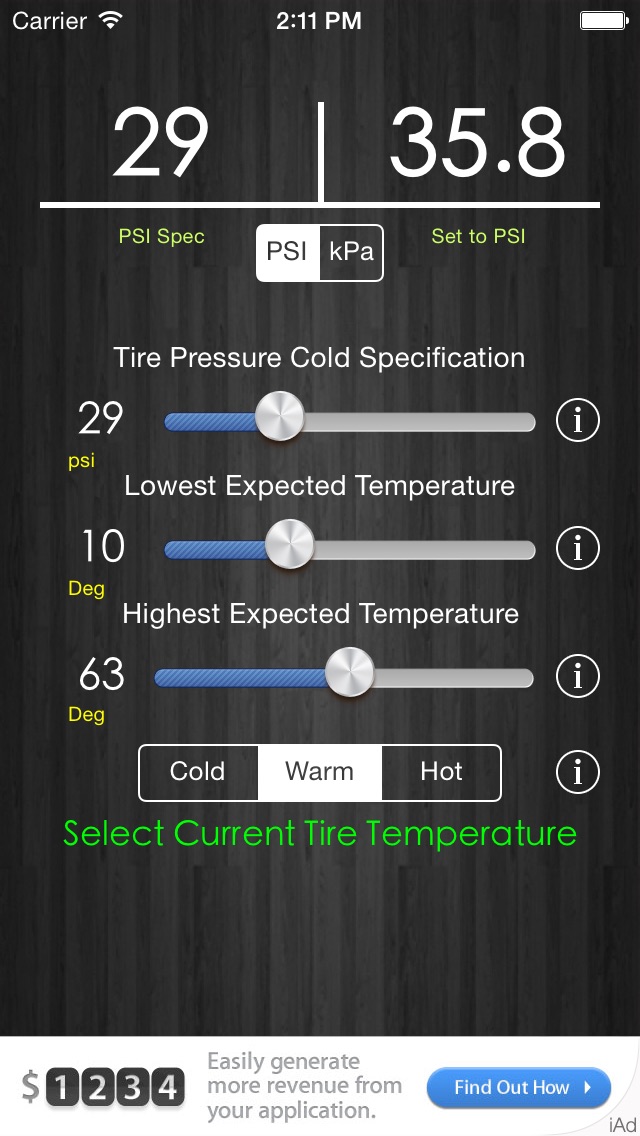 Lowered tires will hit the budget even harder - in addition to tire wear time, the number of visits to gas stations will also increase.
Lowered tires will hit the budget even harder - in addition to tire wear time, the number of visits to gas stations will also increase.
The main difficulty in controlling the pressure in the wheels is due to the fact that there is no single standard for all wheels and cars. This variable is affected by several conditions.
Vehicle type and model . If you remember that the tires must provide sufficient resistance to the weight of the car, it becomes clear that the pressure in the wheels of a small car and a crossover cannot be the same, even if you can put wheels of the same diameter on them - these cars have different weights. Therefore, do not take as a starting point the recommendations indicated on the tires themselves. And because of the differences in the production standards of automakers and body sizes of the same class, it is important to know the recommendations for a particular model. Usually this information is placed in the driver's door opening or on the gas tank cap from the inside.
Wheel diameter . In those cheat sheets that were mentioned above, most likely there will be several values - one for each recommended wheel size with a different disk radius. It's all about the size of the balloon.
Example of a manufacturer's recommendation label
Season . As hot air expands and cold air compresses, the tire pressure also changes. Therefore, in winter, the wheels will have to be pumped up by 0.2-0.3 atmospheres more - you can more accurately navigate by the temperature difference: for every 10 degrees there is about 0.1 bar.
Road surface . It is almost impossible to guess which particular road you will have to go today. But you can navigate by the purposes for which the car was purchased: a frame SUV for fishing is unlikely to often drive on flat surfaces, and a comfortable sedan will not have to constantly overcome potholes and bumps. In the first case, it is recommended to increase the contact surface of the tires by lowering them by 0. 1-0.3 bar, and in the second case, focus on standard values. And if you have a long trip on the highway, it is worth increasing the pressure by 0.2-0.3 atmospheres.
1-0.3 bar, and in the second case, focus on standard values. And if you have a long trip on the highway, it is worth increasing the pressure by 0.2-0.3 atmospheres.
Driving style . Overinflated tires combined with aggressive behavior on the road is a dangerous cocktail: a small patch of contact with the canvas will not allow you to slow down in time, and the rubber can burst from a sharp blow in a small hole or on a bump. Therefore, impatient drivers should stick to the standard values or even lower the wheels slightly for their own safety. And for calm motorists, it is enough to adjust the average pressure indicators depending on the season and type of roads.
Having calculated the optimal value, you can begin to check the current pressure. For this you need a tool and a little theory.
Pressure gauge . This is the name of the device for self-measuring tire pressure. There are three types of pressure gauges: pointer, mechanical and electronic.![]() The former are distinguished by accuracy and fragility, the latter by strength, and the third by very high accuracy (error of only about 0.05 bar) and modernity. It is recommended to check the indicators with such a device at least once a week.
The former are distinguished by accuracy and fragility, the latter by strength, and the third by very high accuracy (error of only about 0.05 bar) and modernity. It is recommended to check the indicators with such a device at least once a week.
Measuring pressure with a mechanical pressure gauge
Electronic sensor . This built-in device in the car will let you know when the tire pressure changes significantly, but does not eliminate the need for a manual pressure gauge: as any electronics, the sensor may be faulty. To get the full picture, it is better to purchase a pointer or mechanical pressure gauge in pair with such a sensor.
Read also: Tire marking: decoding
In order not to be mistaken, having even the most accurate instruments, it is worth remembering the laws of physics and following two rules.
Pressure is measured only on cold tires . Tires heated by traffic can affect the behavior of the air inside the wheel and, accordingly, the pressure gauge. Tires are considered cold if they have not been driven for 5 hours or more.
Tires heated by traffic can affect the behavior of the air inside the wheel and, accordingly, the pressure gauge. Tires are considered cold if they have not been driven for 5 hours or more.
Vehicle must not be overloaded . Excessive mass will cause the air to be distributed unevenly, creating a difference in pressure. In this case, it will be almost impossible to determine the real value.
If the pressure turned out to be too high, it is enough to remove the cap from the nipple and bleed the air, controlling the readings with a pressure gauge. Otherwise, there are several ways to achieve the desired value.
At STO . This option requires not only money, but also time - not every car service is ready to accept a client without an appointment, even for tire inflation. But here you can relax a little instead of manipulating the pump and dirty wheels, and at the same time check the accuracy of your pressure gauge by comparing its readings with those of a professional one: they will definitely measure the tire pressure at the service station again.